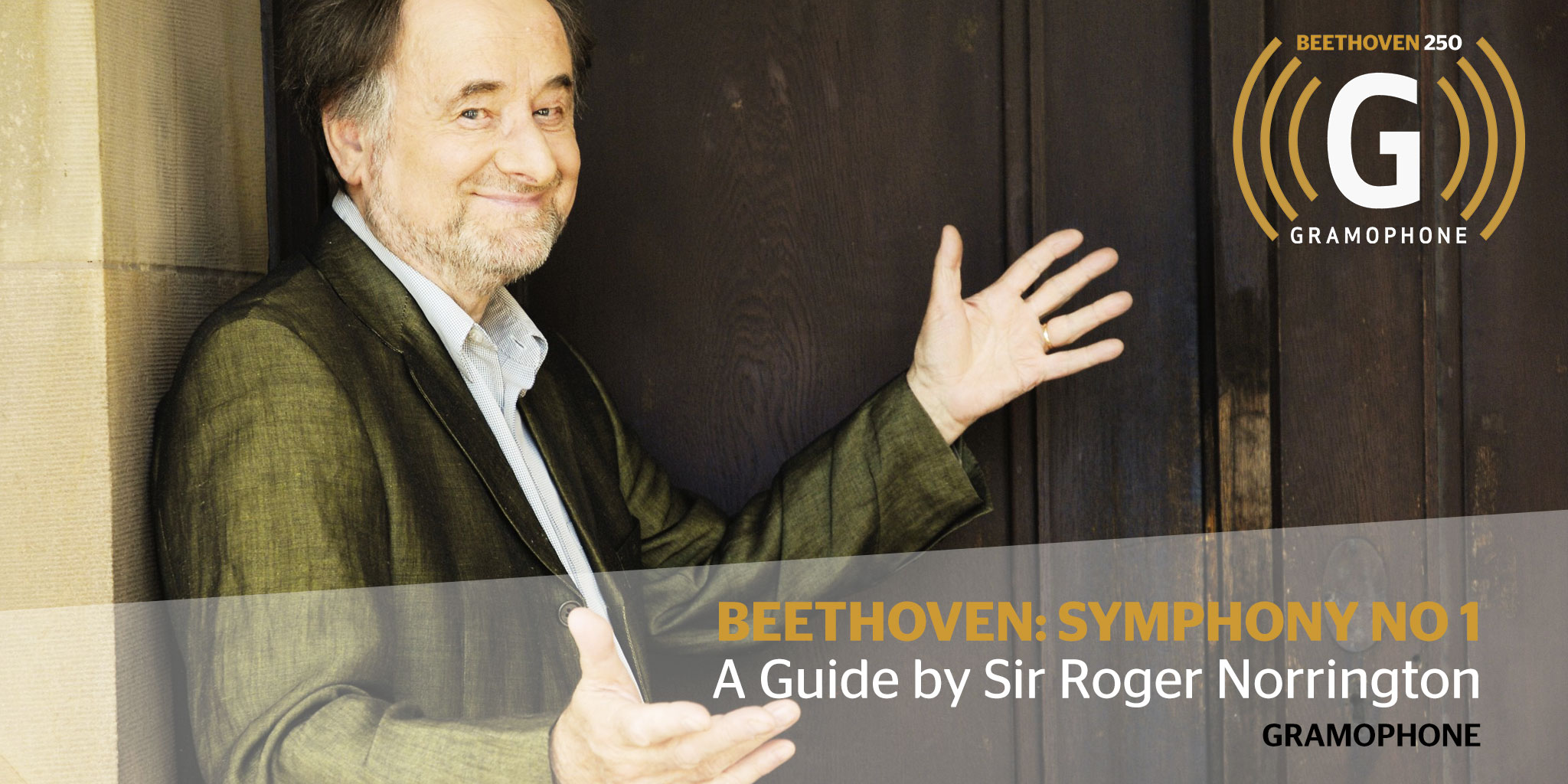Beethoven's Symphony No 1, introduced by Sir Roger Norrington
Gramophone
Monday, September 15, 2014
Over the next nine weeks, nine of the world's leading Beethoven conductors will each explore a Beethoven symphony. We begin with Sir Roger Norrington on Symphony No 1...
When Beethoven wrote his Symphony No 1, he was young and at the height of his powers as both a pianist and a composer of chamber music, but he had also lived more than half his life. This symphony couldn’t have been written by Mozart, that’s for sure, but what about Haydn? I guess you’d always think another hand was at work. Harmonically, it’s a bit more stable than Haydn, a bit more Romantic, and in some ways more mischievous even, but it’s still a lot ‘safer’ than what Mahler or Elgar did in their first symphonies. Beethoven uses a standard, late-Haydn orchestra, full-sized, with clarinets but nothing radical or distinctive, such as contrabassoons, piccolos or trombones. Maybe he thought he’d carry on writing in this style, until deafness made him rethink his future.
The piece is dedicated to Baron van Swieten, prefect of the Imperial Library, Vienna, who’d caused a tremendous amount of music to be written, including Haydn’s The Creation and The Seasons and six symphonies by CPE Bach, whom Beethoven worshipped. There is a direct lineage from CPE to Beethoven, via Haydn.
‘Beethoven would have seen a metronome moving, even if he couldn’t hear it, so his markings are both incredibly illuminating and liberating’
Sometimes I’ll listen to a performance of a Beethoven symphony to hear if people are following the rules, the ‘road map’. I heard Mariss Jansons recently; even these top guys are taking note of what’s going on down in the early music ‘hobbit hole’. It’s very nice when people are generous like that. I resist use of the word ‘interpretation’. We must strive to get it right. Mostly people follow the metronome marks now, but they certainly didn’t before. The metronome was a new invention in Beethoven’s time, and we used to be taught (on absolutely no evidence) that his metronome was faulty. Beethoven would have seen a metronome moving, even if he couldn’t hear it, so his markings are both incredibly illuminating and liberating.
People can be shocked by our work – but it’s the speed at which horses gallop. The answer so often lies in dividing the bars into the correct number of beats. Know the rules: the quaver is never the unit of measure in Haydn, Mozart or Beethoven. It’s only part of the note.
Even before the Jonathan Del Mar editions (Bärenreiter) it was possible to get a perfectly good performance if you knew how to read the code – getting the speeds, note lengths and phrasing right. You don’t need a ‘concept’. There was once a tradition of ‘just playing’ this music, but two strands emerged – Toscanini versus Furtwängler. I wasn’t trying to be different; I was trying to get the music right – and it’s exciting when that becomes mainstream.
We thought no one had done it before, but, as I subsequently discovered, René Leibowitz was using the metronome markings back in the 1950s. He was a pioneer like Pierre Boulez at Bayreuth. It’s wonderful when something ‘crazy’ becomes the norm – especially when it sounds so good.
The first movement starts in the wrong key, not arriving in C for around 20 bars. It was meant to startle people. Beethoven was a bit of a bear in the salons of Vienna, and there is a famous story of an occasion when he was asked to play something: he sat down at the piano, thought for a moment, put his arms down right across the keyboard, then stalked out. He never quite stopped doing that.
The Beethoven symphonies don’t have genuinely ‘slow’ movements. Classical works generally don’t. I remember playing Symphony No 2 under a famous German conductor who said, ‘You have to suffer to play Beethoven slow movements.’ The slow movement in the First Symphony can sometimes sound ponderous, but it’s marked Andante cantabile con moto, so the emphasis must be on singing.
The third movement is marked Menuetto, but look at the metronome marking. Maybe this was a joke? To a German, a menuetto would have been something quite stately, but Beethoven here is suggesting something more like an allegretto or even presto; and there are precedents, in Mozart and the late-Haydn string quartets.
‘It sounds as if it is going to be very gloomy and tragic, then it runs away and becomes totally brilliant’
There is a very Haydnesque-joke-opening to the finale. It sounds as if it is going to be very gloomy and tragic, then it runs away and becomes totally brilliant. Wonderful stuff. People think of Beethoven as being dramatic, exciting, wild – but, when you listen, the harmonies and the orchestration are so incredibly beautiful all the time. Suffering is completely out of place, except perhaps in the Third Symphony.
Wit is the subject matter of the Classical period, so the metronome markings come as no surprise to those of us who know the Baroque. This is like sitting at a sparkling dinner table, listening to a group of very intelligent people. It’s a marvellous idea. The idea of the dance is central and note length is crucial, so Beethoven was very, very careful about marking both staccato and non-staccato notes.
Beethoven never stopped being a Classical composer. He was a breeches man, not a trousers man. He’s not an early Wagner; if anything, he’s a late Haydn. Always he had that late-18th-century grace. He stumbled upon Romanticism. When he composed this symphony, he had a foot in each of two centuries. He lays down his colours: ‘This is what I can do with a symphony…but in a couple of years I’ll show you what I can really do.’
Interview by Michael McManus








